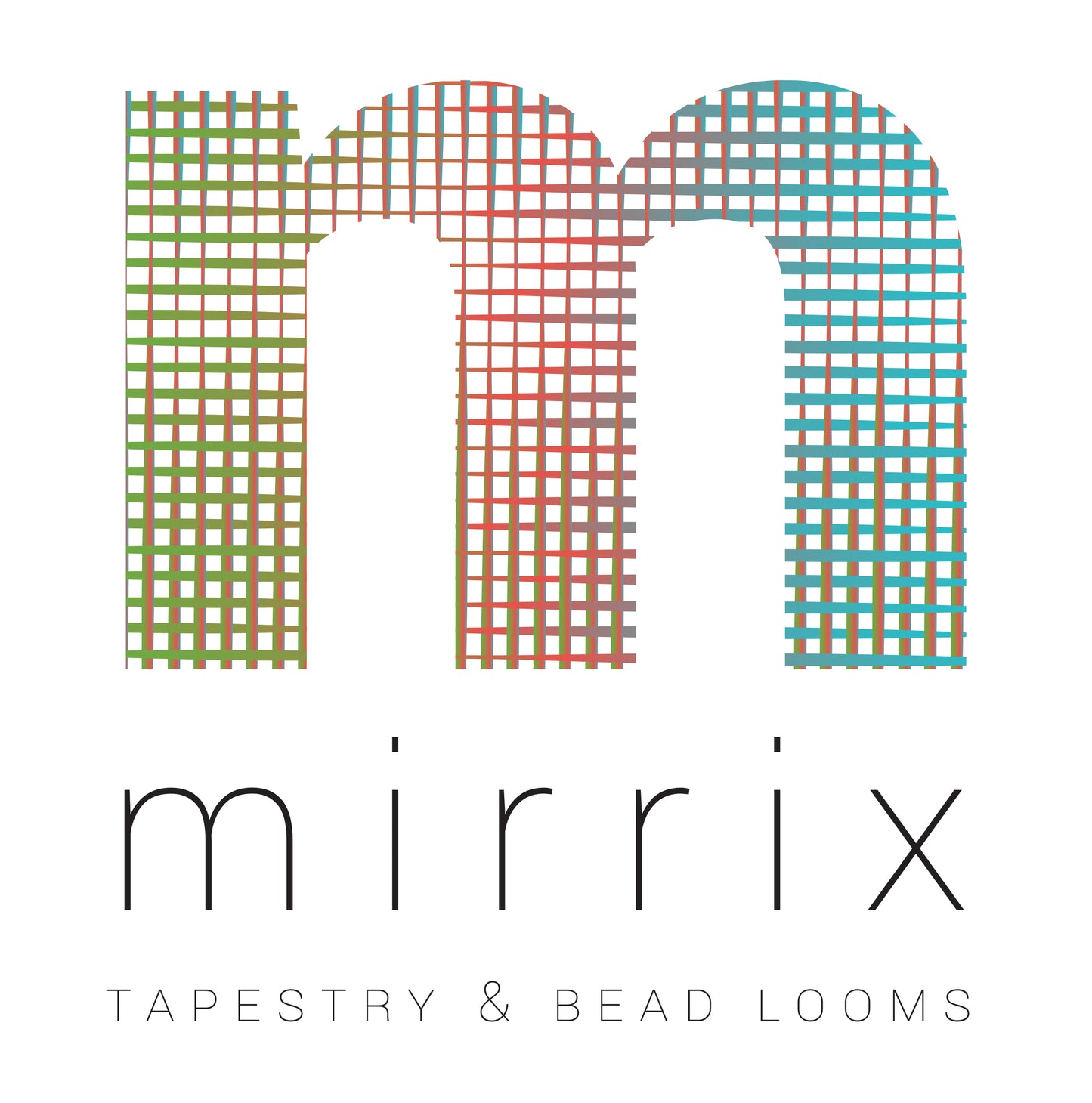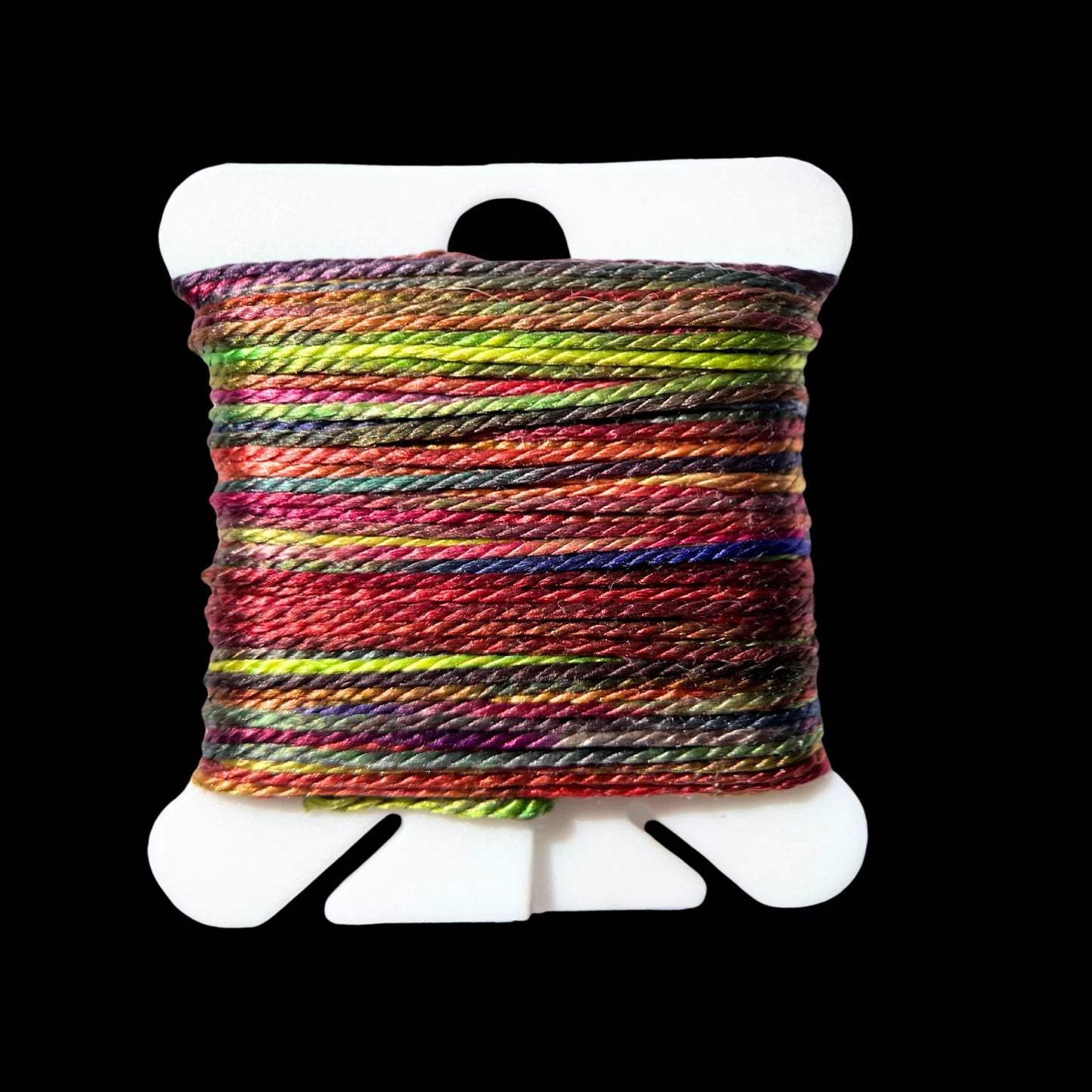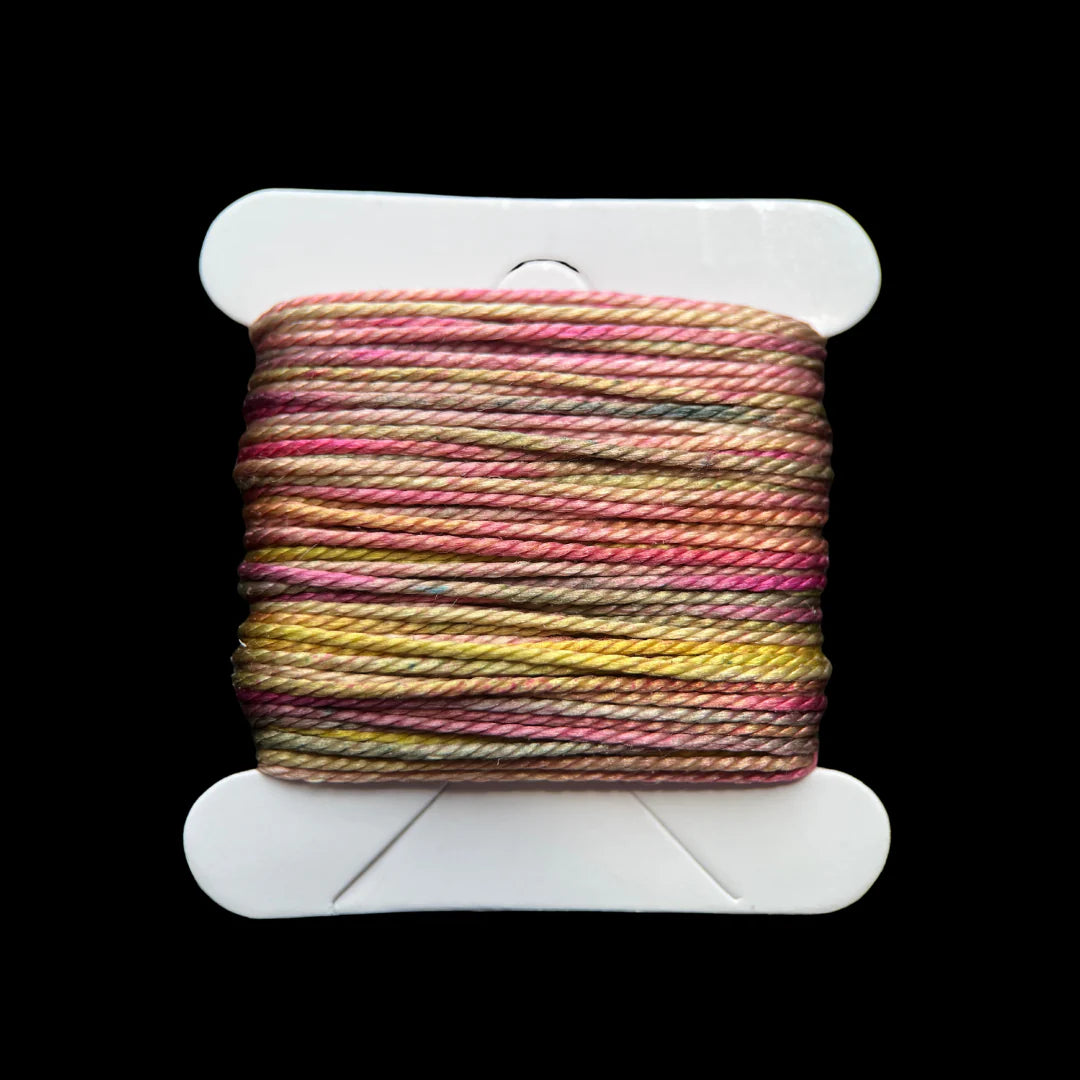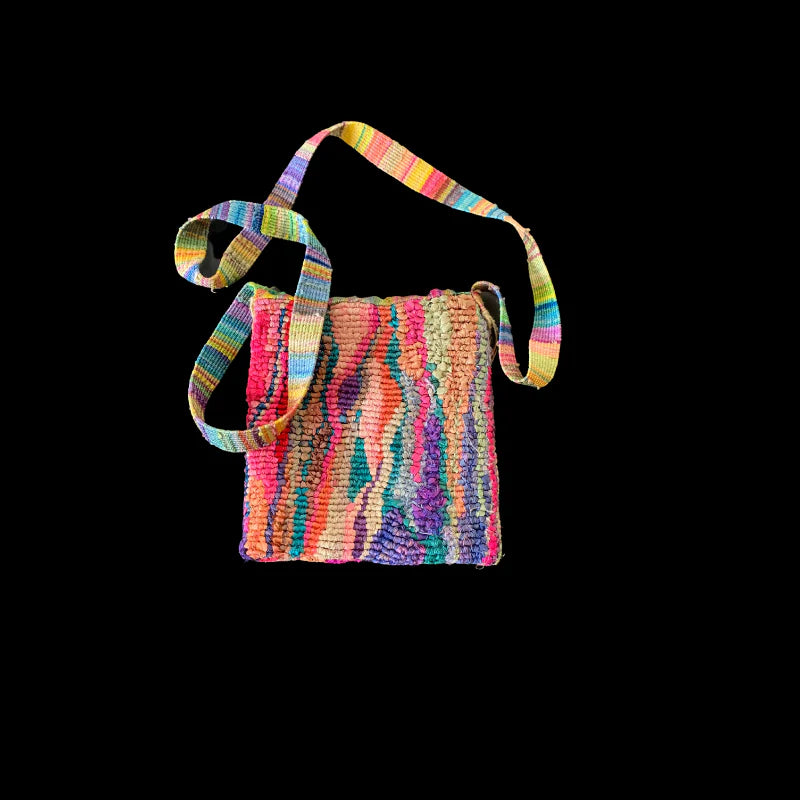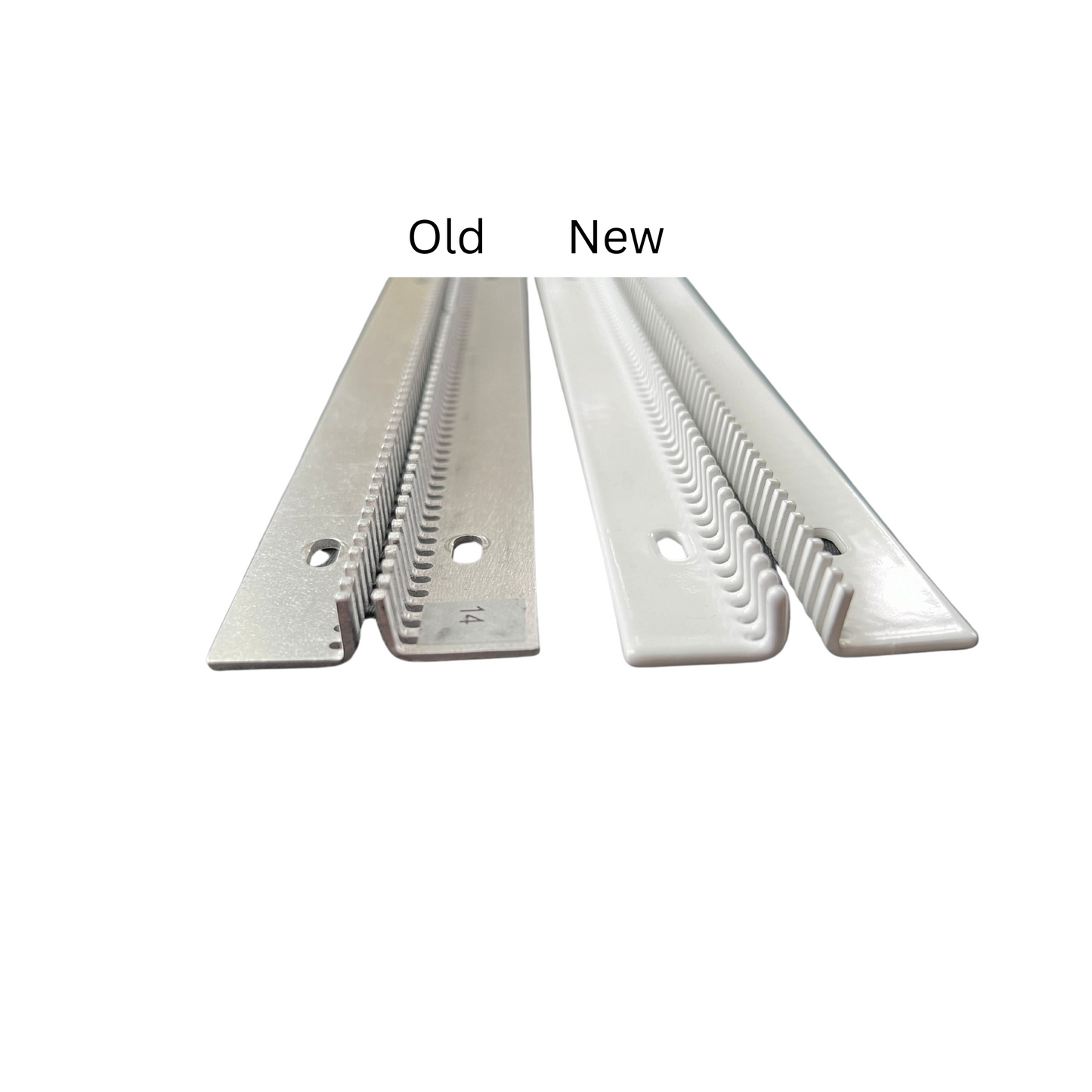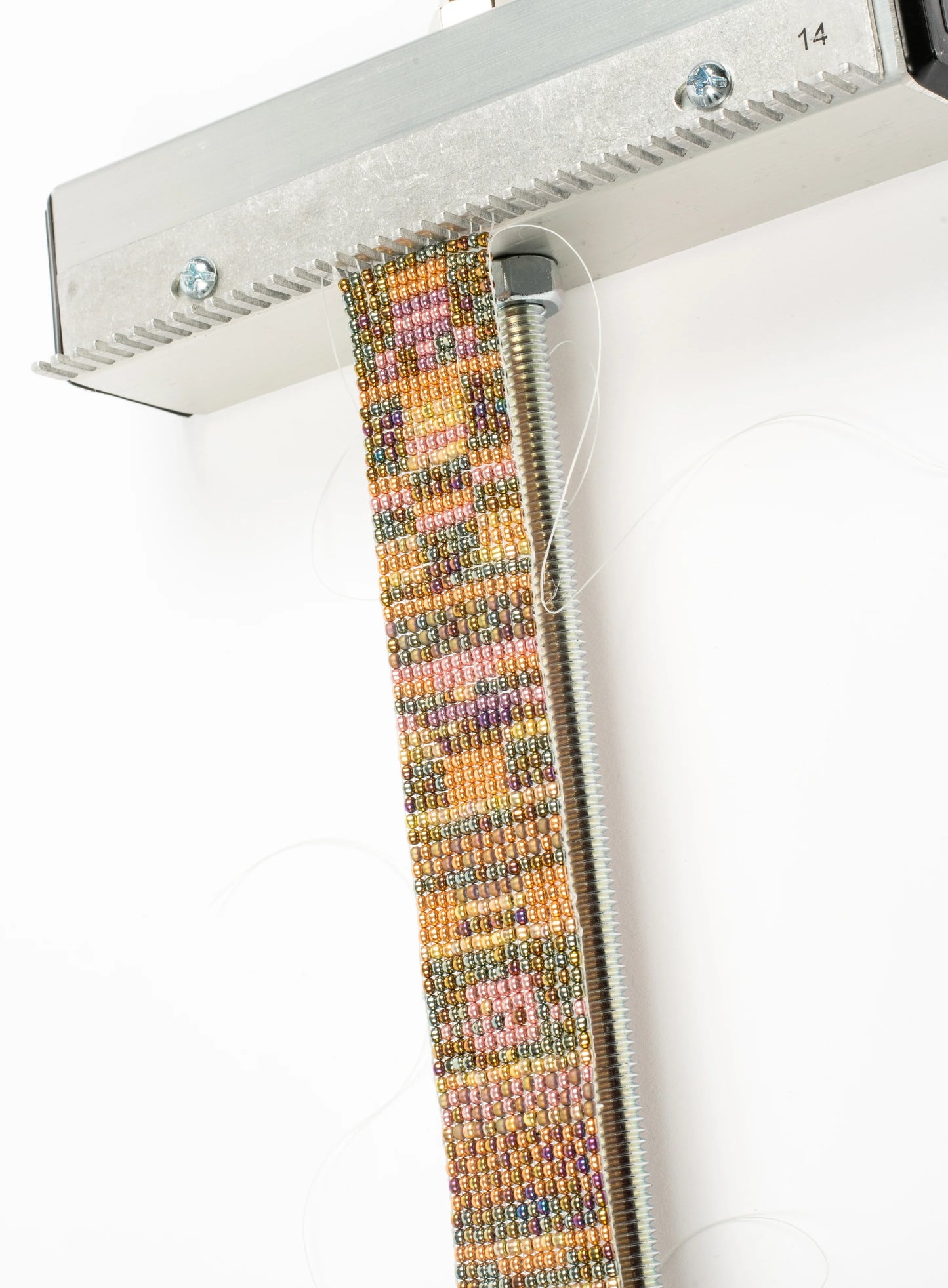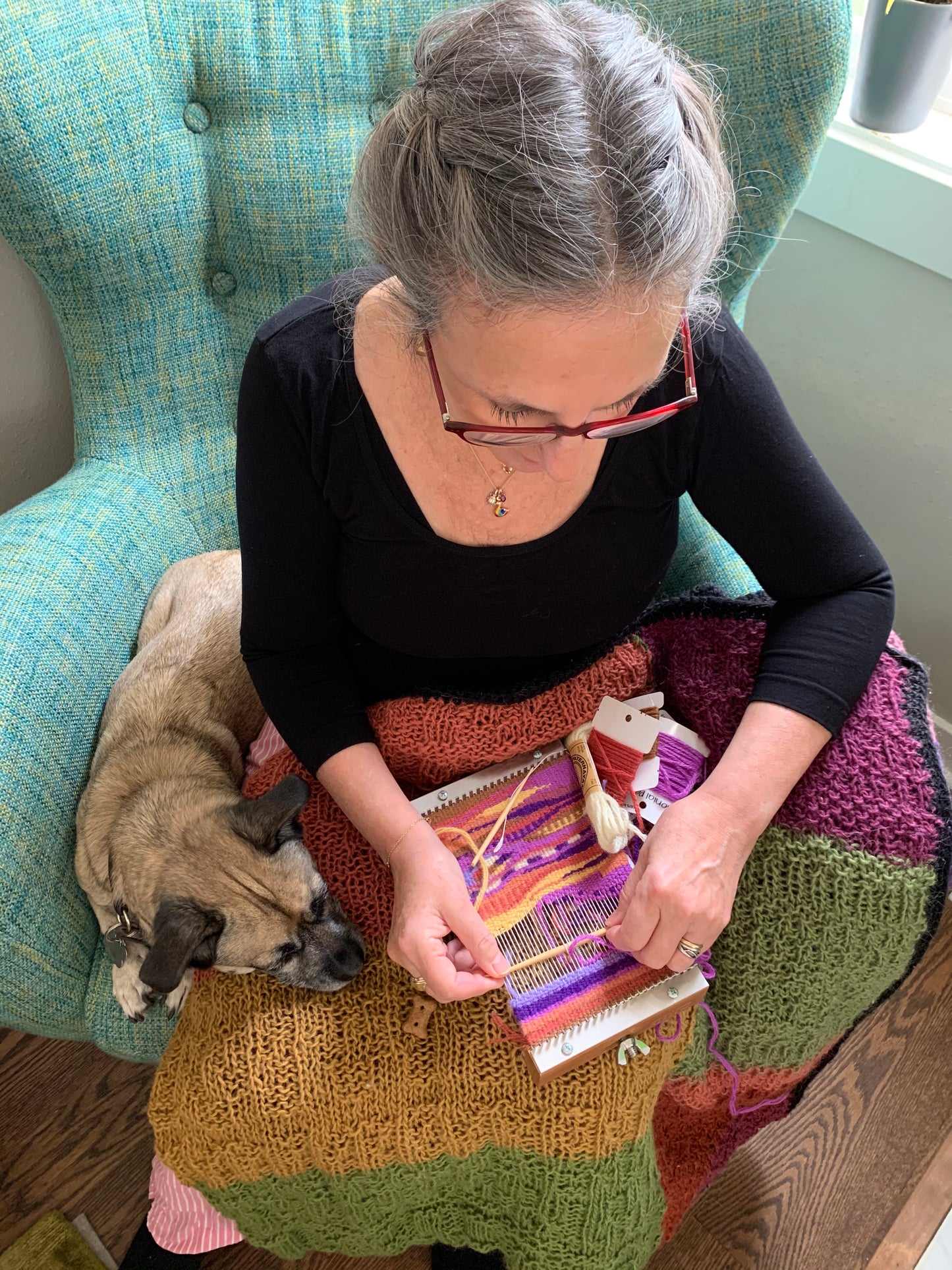
If you are anything like me you don’t just play with one medium. I am not sure what dictates which medium I become obsessed with. Obviously, tapestry is always happening in my studio along with a bunch of other projects from braiding to crochet to knitting to needlepoint (yeah I’ve taken that up again using my hand-painted silk exclusively) to embroidery. The list keeps growing as I add on the years.
Braiding is one of my go-to choices. I always have a disk on hand with a braid in progress. I use them for everything from pursestraps to bracelets and necklaces. It is traditionally used as sashes to tie kimonos so it would make sense to also use these braids for belts or just about anything that requires a cord. I love using the hand-painted silk with them. It’s so soothing and relaxing to braid. And the handy portable Kumihimo disks we are offering are just the thing because they are so portable. Once you memorize the pattern you can practically do it in your sleep. Trust me, I am horrible at following patterns except for braiding. That I can do.
The traditional Japanese way of braiding (also known as Kumihimo) is done on a wooden plate which sits on four poles with a base. This piece of equipment is called a Marudai, which means "mirror" because the disk is very smooth shiny as not to catch the threads. The braider sits or kneels on the floor in front of the Marudai. Braids can be as simple as just four strands and as complicated as 24 strands. It takes a master to make the braids with lots of strands. I am no master. I stick to eight (for round braids) and ten (for flat braids).
Braiding on a Marudai is faster than braiding on a Kumihimo disk. It requires your hands to almost dance manipulating two strands at a time. As you place the two strands you deftly pick up two strands to move elsewhere. That's why I say your hands dance because that is how it feels! But the Marudai is far from portable. When you do move it around the strands often get out of place which is a disaster. So my Marudai stays in one place when I have a braid in progress. The disk, which is slower because you move only one strand at a time, placing it in a slot, but it is extremely portable. You can make any braid on the Kumihimo disk that you can make on the Marudai because it accommodates twenty-four strands. If you are dreaming of making Kumihimo braids, a disk is a good place to start because the Marudais are rather pricey.
I searched my studio to find some samples but apparently almost all of them have been gifted or sold. I did find a couple of round braids.
These are two round braids made of hand-painted silk:


We are offering these portable Kumihimo disks in two versions.
The round disk is for making round braids. Look at how the braids are arranged on the disk. To accomplish the braiding you simply move the threads in a specific direction.

The square disk is for making flat braids. Notice how different the set up is for a flat braid. it also requires more strands.

We’ve put together a lovely collection of hand-painted silk, bobbins and Kumihimo disks for you to explore this fun and soothing medium.
Click on this link for the Round Kumihimo disk, eight cards of hand-painted silk and eight plastic bobbins.
Click on this link for the Square Kumihimo disk, ten cards of hand-painted silk and eight plastic bobbins.
